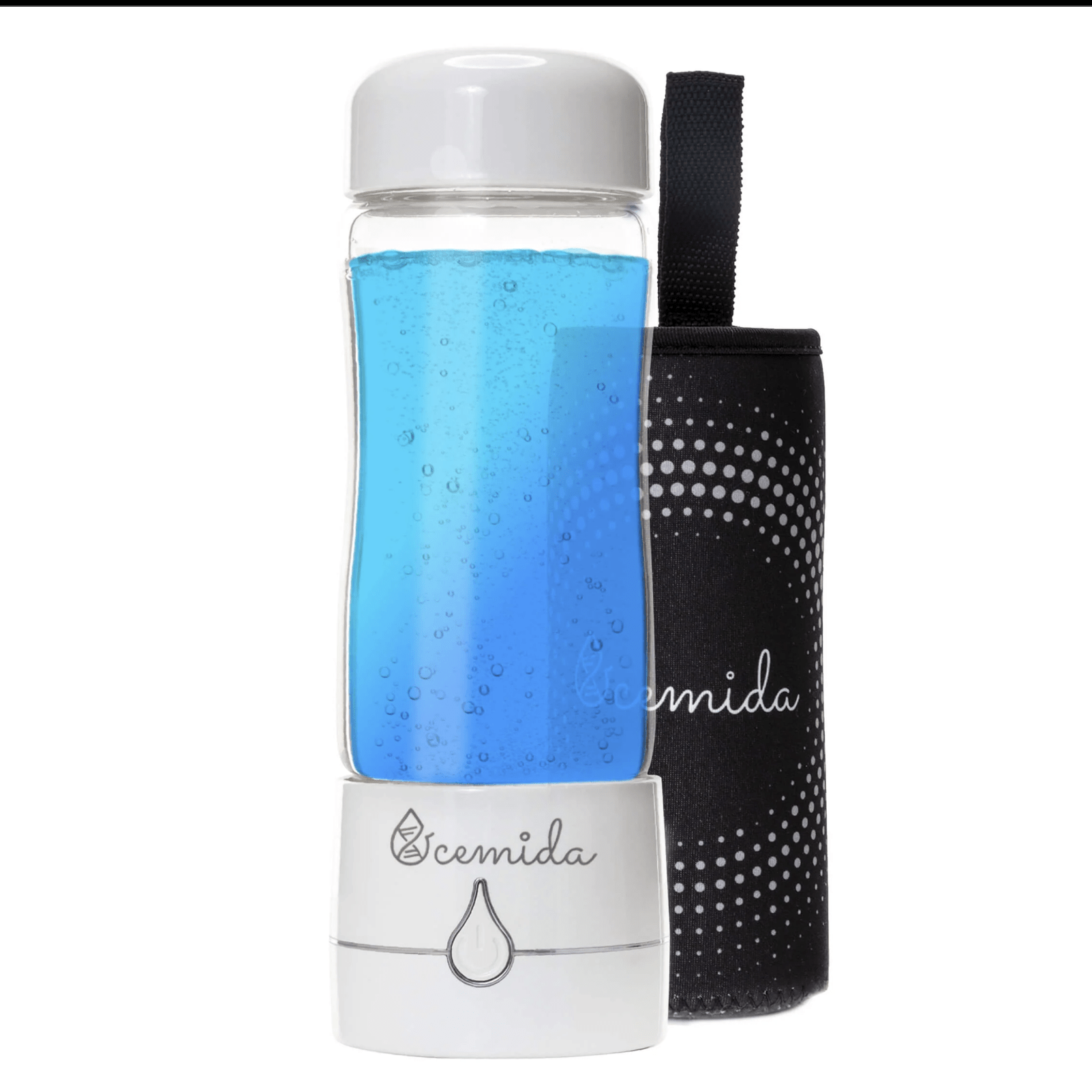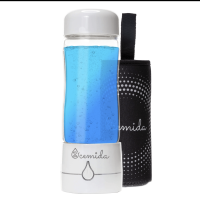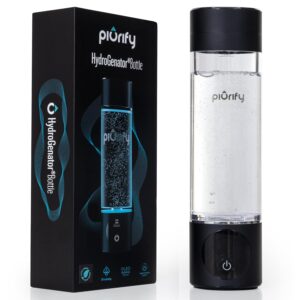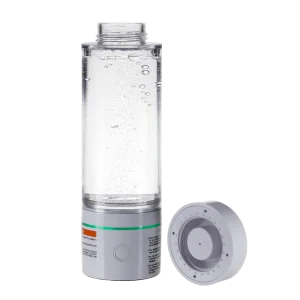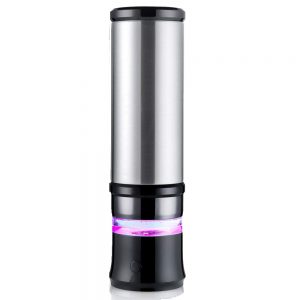{ END OF ORIGINAL DESCRIPTION }
OUR TEST
The Ocemida 2800 incorporates most of the benefits of the latest 6th generation models, but lacks the pressure design. It features modern electronics with a microprocessor and uses a Solid Polymer Electrolyte (SPE) to separate hydrogen from oxygen. Additionally, it comes equipped with a rechargeable lithium-ion battery. Instead of using Henri’s Law to dissolve hydrogen in water, this budget-friendly device utilizes nano-bubbles.
To keep the price low, some compromises were expected, but we were pleasantly surprised to find two platinum-plated titanium electrodes, rather than just one. This is impressive, given that even manufacturers of high-end devices sometimes use a stainless steel cathode, which doesn’t contact the water, to save on costs.
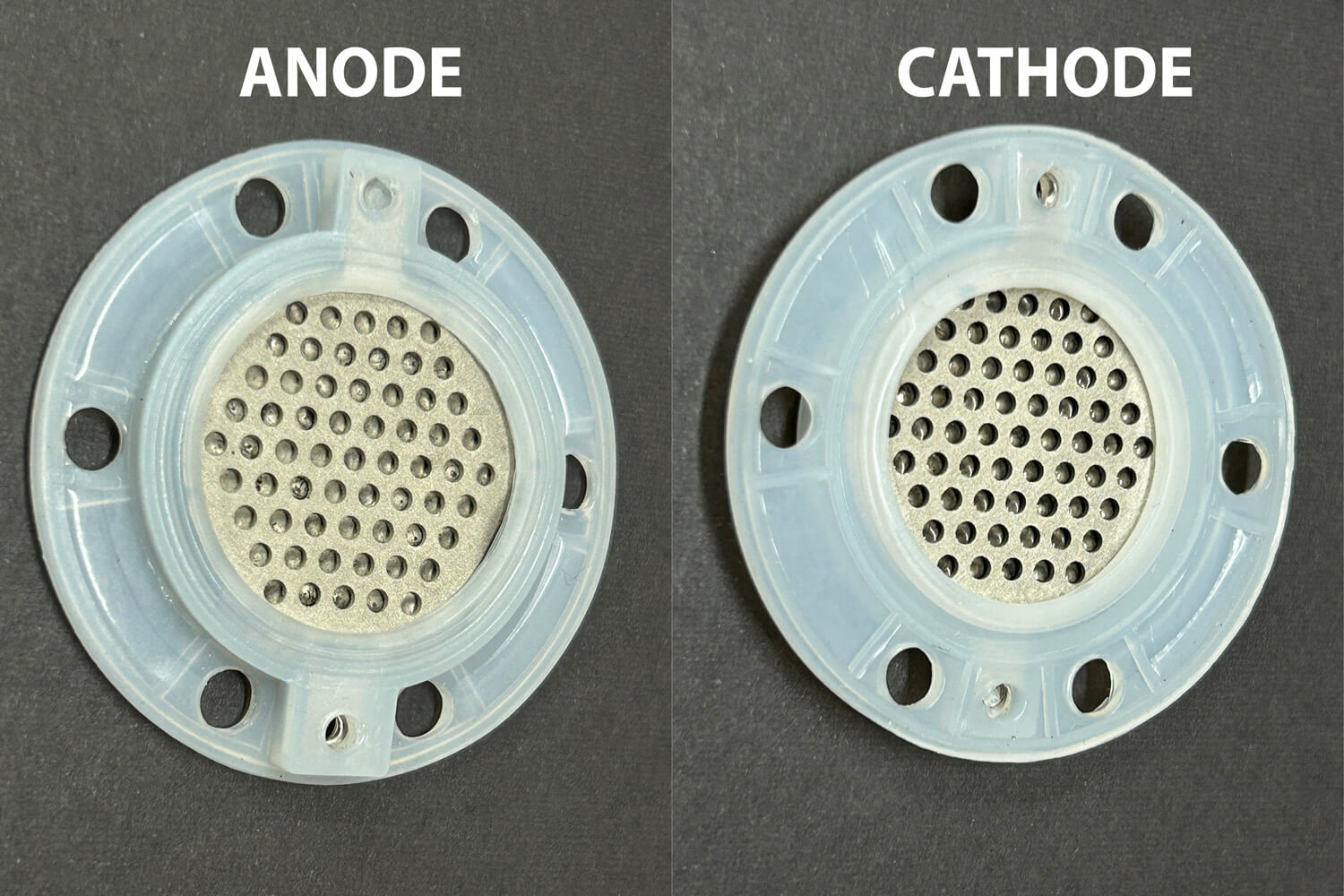
Platinum layer on both electrodes
Ocemida has maintained the quality of critical components while trimming less important features. The device avoids relying on pressure, allowing the company to offer it at a more affordable price by using a food-grade silicone casing instead of the traditional metal and Tritan materials. This design choice significantly reduces costs for consumers while still ensuring quality and safety.
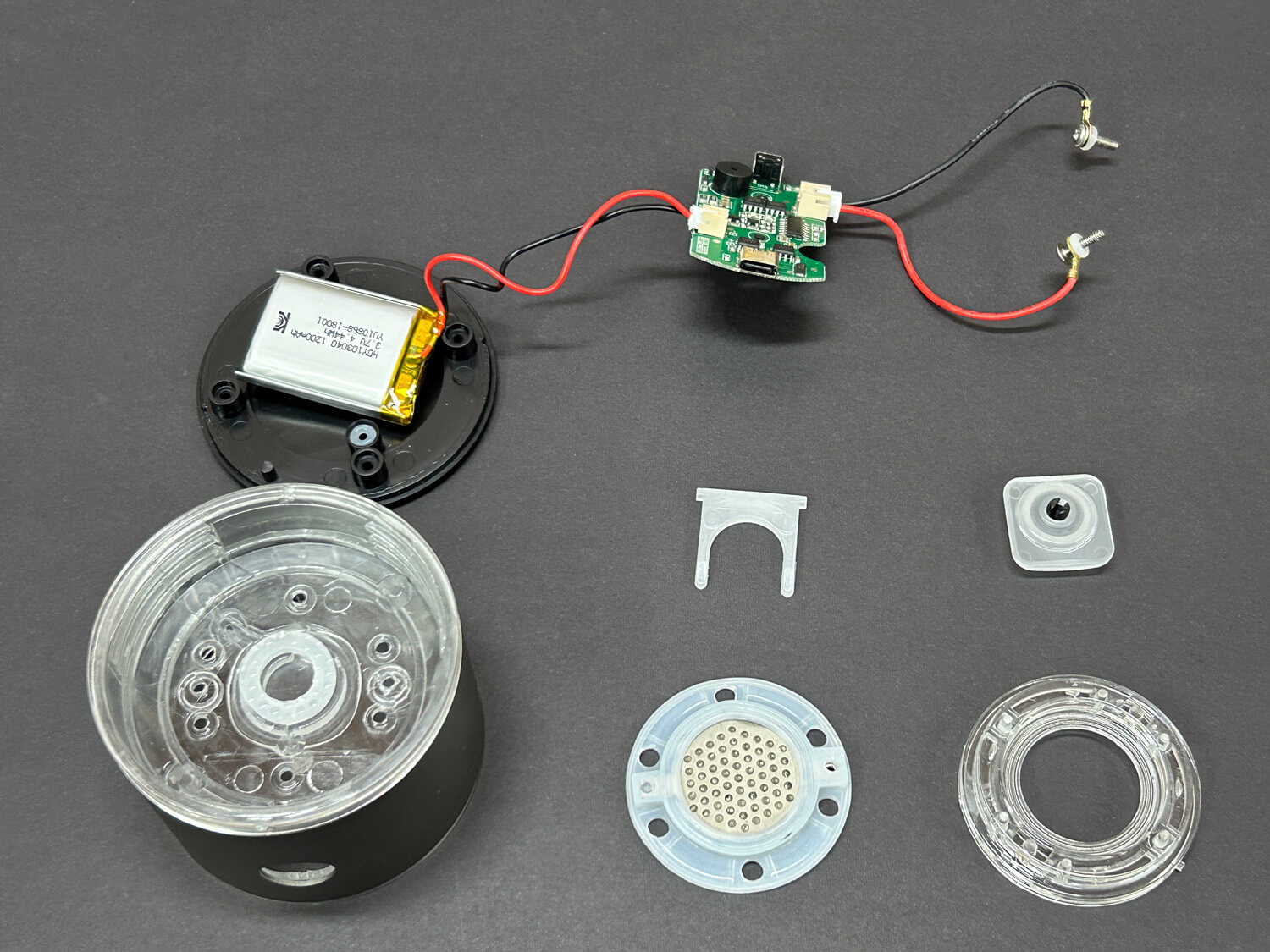
As anticipated, the internal components of this device are not as solid and premium as those found in their professional models.
It does not employ a proton exchange membrane (PEM), which results in reduced efficiency. However, we appreciated the near-UV cleaning feature. This functionality allows you to disinfect the bottle, adding a layer of versatility and practicality to the device.
In conclusion, while the Ocemida 2800 may not boast the same level of internal solidity or premium features as their professional models, it offers remarkable value for its price point. Its modern electronics, use of SPE for hydrogen-oxygen separation, and rechargeable lithium-ion battery provide a solid foundation. The incorporation of two platinum-plated titanium electrodes and UV self-cleaning feature add significant utility and versatility. Though it sacrifices the efficiency of a proton exchange membrane and relies on a silicone casing, these trade-offs enable it to remain budget-friendly without compromising on essential quality and safety. Overall, the Ocemida 2800 stands out as a reliable and cost-effective option, making hydrogenated water accessible to a broader audience.

